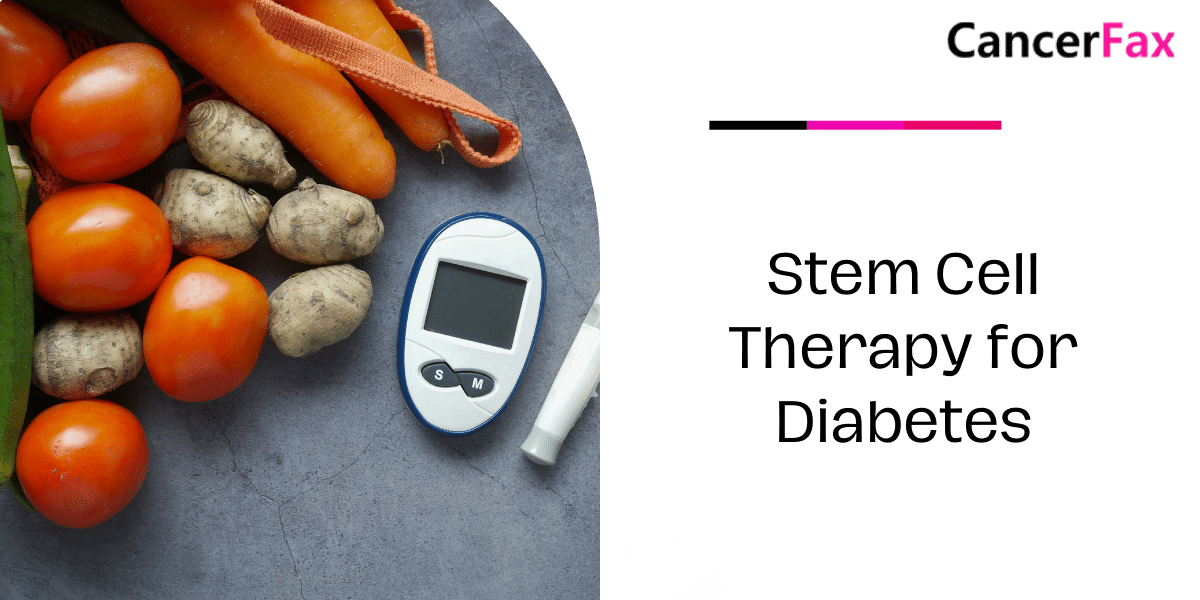Stem Cell therapy
A revolutionary approach in the treatment of various medical conditions.
Learn more about this revolutionary treatment option.
Stem cell therapy has great promise in medical treatment, as it makes use of stem cells’ unique features for a variety of applications. Stem cells are crucial for regenerative medicine because they have the ability to self-renew indefinitely and specialize into various cell types. Recent advances have demonstrated substantial success in the use of stem cells to treat diseases such as Alzheimer’s, neurological disorders, ophthalmic problems, and diabetes. Stem cell therapy has the potential to help with tissue regeneration, medication discovery, and immunotherapy. The therapeutic potential of stem cells stems from their ability to repair damaged cells, model diseases for research, and even fix genetic abnormalities. Stem cell treatment is a groundbreaking strategy with far-reaching consequences for medical science.
March, 2024: Stem cell treatment, a cutting-edge topic in regenerative medicine, has enormous potential for treating a wide range of diseases and ailments. Stem cells are undifferentiated cells that can develop and multiply forever. The history of stem cells extends back to the mid-nineteenth century, with substantial advances in the twentieth century, culminating in the first successful bone marrow transplant in 1958 by French oncologist Georges Mathé.
Understanding Stem Cells
Stem cells are widely categorized as embryonic stem cells and adult stem cells. While embryonic stem cells have received attention for their potential, adult stem cells, such as mesenchymal stem cells (MSC) derived from bone marrow and adipose tissue, have practical applications in the clinic. These cells are vital for tissue regeneration and repair.
Clinical Applications
Stem cell therapy has shown promise in a variety of medical fields, including current studies in cancer treatment and regenerative medicine. Current clinical applications include bone marrow transplantation, which has shown effective in treating certain illnesses. However, problems such as the availability of standardized goods and a knowledge of the mechanisms of action after transplantation persist.
Future Directions
The field of regenerative medicine is quickly growing, with an emphasis on overcoming obstacles such as teratogenic consequences, immunological reactions, and guaranteeing the safety and efficacy of stem cell treatments. Research is ongoing to improve our understanding of stem cell function after transplantation and their interactions inside the body.
To summarize, stem cell therapy is a novel approach to healthcare that holds promise for treating a wide range of disorders. While tremendous progress has been made, additional study is required to fully realize the potential of stem cells in therapeutic practice.
What are the different types of stem cell?
Stem cells are a diverse set of cells with distinct features and functions that hold enormous potential for medical study and treatment. Here are the several types of stem cells:
1. Totipotent Stem Cells: – Totipotent stem cells can develop into any cell type needed for an organism’s development.
These cells exist only in the early stages of embryonic development.
2. Pluripotent stem cells can differentiate into any cell type except those needed for embryonic development.
Subtypes:
Embryonic Stem Cells (ESCs): They are derived from blastocysts and have the ability to create all body cells.
Induced pluripotent stem cells (iPSCs): Adult cells that have been genetically reprogrammed to have ESC-like properties.
3. Multipotent Stem Cells: Can only develop into certain cell types within a lineage.
Include mesenchymal, neuronal, and hematopoietic stem cells.
4. Oligopotent Stem Cells: These cells can differentiate into several related cell types, including lymphoid and myeloid stem cells, which grow into particular blood cells.
5. Unipotent Stem Cells: Unipotent stem cells have restricted differentiation potential and produce only one cell type.
Muscle stem cells that only develop into muscle cells.
The classification of stem cells is constantly changing, reflecting continuous research and discoveries in this subject. Each type of stem cell has distinct properties and applications in medical research and therapy, paving the path for novel treatments and regenerative medicine.

You may like to read: CAR T-Cell therapy in China
What is the difference between embryonic and adult stem cells?
Stem cells are important in regenerative medicine and research because of their unique traits and potential. Here are the main differences between embryonic and adult stem cells:
1. Embryogenic Stem Cells:
– Origin: Derived during early development at the blastocyst stage.
– Potency: pluripotent, able to differentiate into any cell type.
– Location: Found in the blastocyst.
– Applications: They are essential for the development of the fetus and have the ability to differentiate into practically any cell type.
2) Adult Stem Cells:
– Origin: Obtained from fully developed adult organs and tissues.
– Potency: multipotent, able to differentiate into closely related cell types within a given lineage.
– Distribution: Found in bone marrow, brain, blood, liver, skin, skeletal muscles, and adipose tissue.
– Applications: Play an important function in tissue regeneration and repair; utilized to treat disorders such as sickle cell anemia and cancers.
Key Differences:
– Potency: Embryonic stem cells are pluripotent, but adult stem cells are multipotential.
– Origin: Embryonic stem cells are present in the early blastocyst stage, whereas adult stem cells are derived from differentiated tissues in fully grown individuals.
– Applications: While both types can renew and differentiate into new cells, embryonic stem cells are particularly useful due to their pluripotency. Adult stem cells are favored for therapies due to their safety and convenience of use.
To summarize, embryonic and adult stem cells have different potencies, origins, and applications. Understanding these disparities is critical for maximizing the potential of stem cells in medical research and therapeutic interventions.

You may like to read: Stem cell therapy for diabetes
What are the advantages of using embryonic stem cells over adult stem cells?
Embryonic stem cells and adult stem cells have different advantages and disadvantages in the field of regenerative medicine and research. The following are the advantages of employing embryonic stem cells versus adult stem cells:
1. Pluripotency: – Embryonic Stem Cells These cells are pluripotent, which means they have the ability to differentiate into any cell in the body. This adaptability enables a wider range of uses in research and therapy than adult stem cells, which are often multipotent.
2. Proliferation Capacity for Embryonic Stem Cells: They have a greater capacity for self-renewal and proliferation than adult stem cells, making them useful for large-scale synthesis of specific cells required for transplantation or research.
3. Developmental Potential: These cells, which originate in the early blastocyst stage, have the unique capacity to contribute to the development of many tissues and organs, providing a more comprehensive approach to tissue regeneration and repair.
4. Research Applications: Embryonic stem cells are widely employed in basic research and drug development due to their pluripotency and capacity to represent diverse diseases. This provides insights into disease mechanisms and potential therapeutic approaches.
5. Regenerative Medicine: Embryonic Stem Cells have the potential to treat various diseases by replacing damaged tissues with healthy, specialized cells developed from pluripotent embryonic stem cells.
To summarize, the benefits of employing embryonic stem cells include their pluripotency, proliferation capacity, developmental potential, and diverse applications in research and regenerative medicine. While there are ethical concerns and hurdles, exploiting the unique features of embryonic stem cells has the potential to significantly revolutionize healthcare and disease treatment.
What what are the potential applications of adult stem cells?
Potential Applications for Adult Stem Cells
Adult stem cells, also known as somatic stem cells, provide a variety of therapeutic options for regenerative medicine and disease treatment. Adult stem cells have the following possible applications:
1. Tissue regeneration: Adult stem cells play an important function in tissue regeneration and repair. They can replace injured or destroyed cells in a variety of tissues, including blood, skin, bone, cartilage, and heart muscle.
2. Degenerative illnesses: Adult stem cells show potential in treating diabetes, heart illnesses, Parkinson’s, Alzheimer’s, and other neurodegenerative disorders. These cells have the capacity to replace damaged neurons in the brain and spinal cord, providing promise for therapeutic treatments.
3. Therapeutic Angiogenesis: Adult stem cell therapies have the potential to stimulate therapeutic angiogenesis, or the development of new blood vessels. This method is critical for situations where increased blood flow is required for tissue repair and regeneration.
4. Organ Repair: Efforts are underway to induce adult stem cells to regenerate missing cells in damaged tissues. Using the current tissue organization and chemicals, these cells can be led to regenerate the necessary cell types, potentially aiding in organ repair and function restoration.
5. Heart Muscle Repair: Adult stem cells show potential for rebuilding cardiac muscle following heart attacks. Significant advances in treating heart-related disorders could be made by activating these cells to rebuild cardiac tissue.
In summary, adult stem cells have a wide range of uses in regenerative medicine, including tissue regeneration, degenerative disease treatment, and organ repair. Their therapeutic potential shows promise for treating a variety of medical problems and improving patient outcomes.

You may like to read: CAR T-Cell therapy for multiple myeloma in China
What type of diseases can be treated by stem cell therapy?
Stem Cell Therapy for Different Disease Areas
Stem cell treatment has emerged as a viable strategy in regenerative medicine, with the potential to cure a variety of diseases by using stem cells’ unique features. Here is an outline of the areas of the illness where stem cell therapy can be used.
Neurodegenerative disorders:
Stem cell therapy holds potential for treating neurodegenerative disorders such as Alzheimer’s by rebuilding damaged brain cells and tissues.
Musculoskeletal diseases:
Conditions like osteoarthritis can benefit from stem cell therapy, which uses stem cells to restore cartilage and heal damaged tissue.
Cardiovascular diseases:
Stem cell therapy has been investigated for the treatment of myocardial infarction (heart attack) by stimulating heart muscle regeneration.
Blood cell disorders:
Stem cell transplantation, specifically blood stem cells, is a well-established treatment for a variety of blood illnesses, including leukemia and immunological deficiencies.
Spinal cord injuries:
Stem cell research is currently being conducted in spinal cord injury cases in order to potentially restore function and repair damaged tissues.
Skin grafts for severe burns:
Skin stem cells have been employed since the 1980s to create skin grafts for patients with severe burns, demonstrating yet another application of stem cell therapy.
Corneal damage repair:
The development of stem cell therapy’s ocular applications is evident in the conditional marketing approval of a new stem cell-based therapy for the repair of corneal damage from accidents like chemical burns.
Diabetes Mellitus: Stem cell therapy can be a very good treatment option to treat diabetes. Read more about stem cell therapy to treat diabetes.
Finally, stem cell therapy has considerable potential in a variety of disease areas, providing hope for patients by rebuilding damaged tissues, restoring function, and enhancing their quality of life. However, additional studies, clinical trials, and regulatory approval are required to determine the safety and efficacy of these medicines before broad adoption.
What are the side-effects of stem cell therapy?
Stem cell therapy can have a variety of side effects, both short and long term. Fatigue, headache, chills, nausea, and low-grade fever are some of the most prevalent short-term adverse effects. On the other hand, stem cell therapy can cause more serious issues, such as cells’ capacity to travel from implantation sites and convert into inappropriate cell types or multiply, cell failure to function as planned, and tumor formation. Additionally, stem cell or bone marrow transplants can cause nausea, vomiting, stomach cramps, diarrhea, loss of appetite, jaundice, mouth and throat pain, mucositis, and even secondary malignancies. Individuals considering stem cell therapy should be aware of these potential hazards and seek treatment from reputable facilities that have undergone proper scrutiny and clinical testing.
